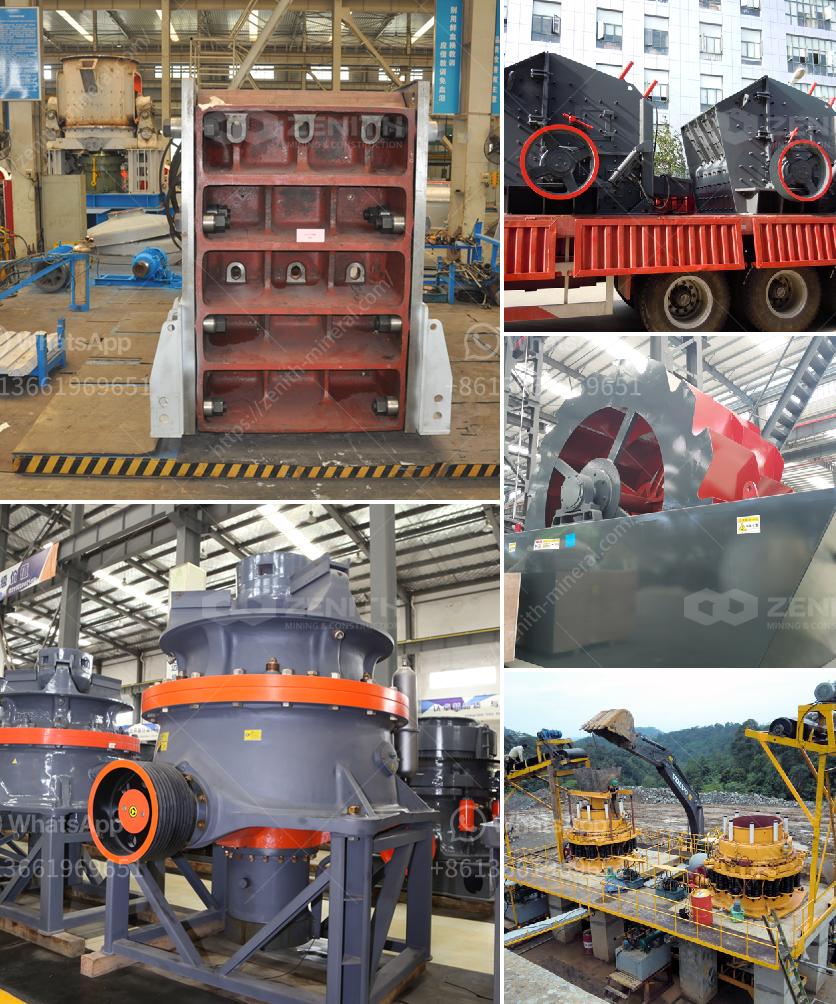Crushers are essential machines in mining, construction, and other industries where they help reduce the size of large rocks, ores, and other materials. Choosing the right type of crusher depends on several factors, including the material you are processing, the desired size of the final product, and the production requirements.
Here are the main types of crushers and some guidance on how to choose the right one:
1. Jaw Crushers
Description:
- Usage: Primary crushing.
- Material: Suitable for hard and abrasive materials.
Advantages:
- Simple structure.
- High crushing ratio.
- Easy maintenance.
Considerations:
- Not suitable for sticky or wet materials.
2. Cone Crushers
Description:
- Usage: Secondary or tertiary crushing.
- Material: Suitable for medium to very hard materials.
Advantages:
- Efficient for mass production.
- Produces finer material compared to jaw crushers.
Considerations:
- More complex structure.
- Higher operational costs.
3. Impact Crushers
Description:
- Usage: Primary, secondary, or tertiary crushing.
- Material: Suitable for soft to medium-hard materials.
Advantages:
- Can handle a variety of materials.
- Produces irregularly shaped particles.
Considerations:
- Higher wear and tear.
- Not suitable for very hard materials.
4. Gyratory Crushers
Description:
- Usage: Primary crushing.
- Material: Suitable for hard and abrasive materials.
Advantages:
- High throughput capacity.
- Continuous operation.
Considerations:
- Very large and heavy.
- Higher capital cost.
5. Hammer Crushers
Description:
- Usage: Primary, secondary, or tertiary crushing.
- Material: Suitable for soft to medium-hard materials.
Advantages:
- Simple structure.
- High reduction ratio.
Considerations:
- High wear and tear on hammers.
- Not suitable for very hard materials.
6. Roll Crushers
Description:
- Usage: Primary, secondary, or tertiary crushing.
- Material: Suitable for soft to medium-hard materials.
Advantages:
- Produces few fines.
- Simple structure.
Considerations:
- Limited reduction ratio.
- Wear on rollers.
How to Choose?
1. Material Characteristics:
- Hardness: Harder materials require stronger, more durable crushers.
- Abrasiveness: Abrasive materials require crushers with wear-resistant parts.
- Moisture Content: Moist materials may clog some types of crushers, like jaw crushers.
2. Desired Output:
- Size Reduction: Determine the reduction ratio required.
- Product Shape: Some crushers provide better particle shape than others.
3. Capacity Requirements:
- Match the crusher’s capacity to your production needs.
4. Operational Considerations:
- Maintenance: Choose crushers that are easy to maintain.
- Operational Costs: Factor in energy, parts, and labor costs.
5. Space and Mobility:
- Installation Area: Ensure the available space can accommodate the crusher.
- Mobility: Some crushers are stationary, while others are portable.
By evaluating these factors, you can select the crusher that best meets your operational requirements and optimizes your production process.

